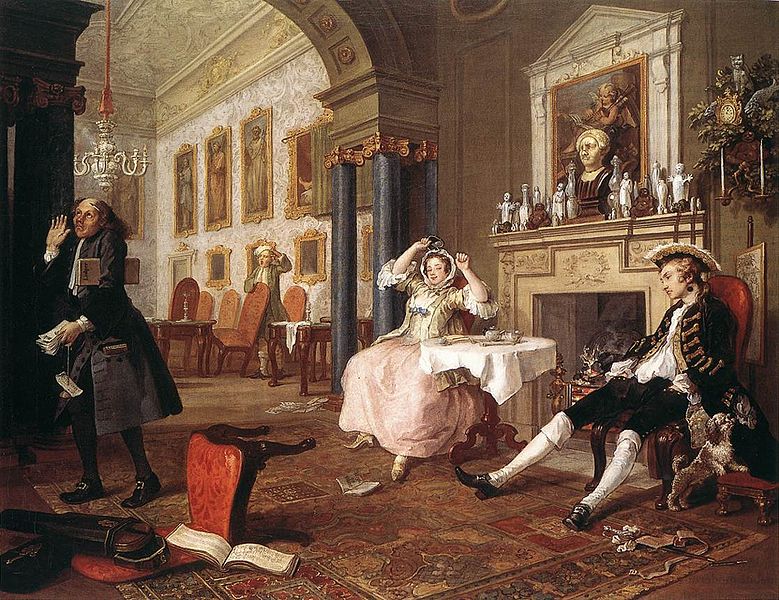William Hogarth was a rebel. He rebelled against the art academy and he had something to say about London society in the mid-eighteenth century. He didn’t like the nouveau-riche middle class, nor did he care for the gentry. His mode of communication was prints, which were inexpensive and portable, and his message was highly and overtly critical.
Often, Hogarth would create a series of paintings that tell the tale of the poor choices people make and the devastating consequences of their decisions. He would then reproduce the series in prints and thus would be able to disseminate his point-of-view quickly and easily. These satirical prints were as popular as reality television is today and they served a similar purpose.
Hogarth’s painting Tête à Tête is from his Marriage à la Mode series that shows the immoral character of an arranged marriage between the son of an impoverished nobleman and the daughter of a rich merchant. The man had been out all night and we can see from the clock above his head that he returned home in the early afternoon. The little dog sniffs at the lady’s cap that is falling out of the man’s coat pocket. Whoever was with his wife appears to have left quickly, leaving his violin on the floor and a chair overturned. The disgusted servant storms out of the room, holding a stack of bills. In the end, the wife’s lover kills her husband and then she commits suicide.
See several of Hogarth’s more famous print series at the Blanton Museum of Art in Austin, TX through January 13, 2013.
Recommended Reading


